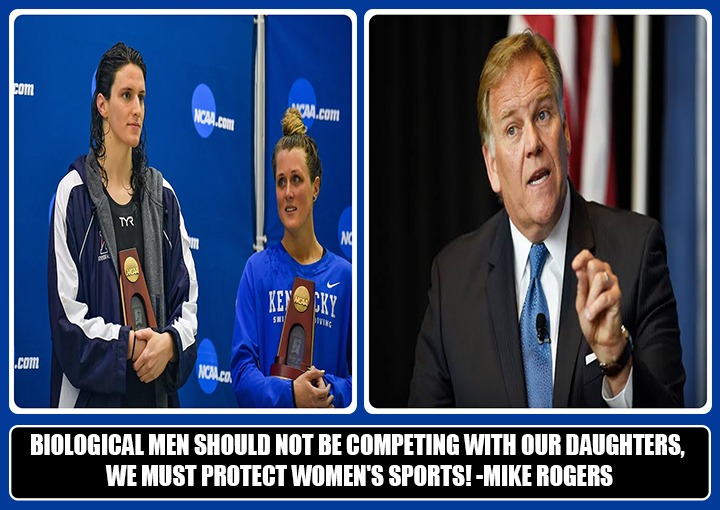Mike Rogers recently stirred up a contentious debate by asserting that biological men should not be competing with our daughters in women’s sports, emphasizing the need to protect the integrity and fairness of women’s sports. This statement has sparked widespread discussion, with many agreeing with Rogers, while others argue for a more inclusive approach to sports participation. At the heart of this debate lies the question of fairness, safety, and the preservation of opportunities for women athletes.
Women’s sports have historically been a platform to promote gender equality, providing young girls and women the opportunity to excel and compete on an equal footing. The introduction of transgender athletes, particularly transgender women (biological males who identify as female), into women’s sports has raised concerns about competitive fairness. Rogers and his supporters argue that biological differences between men and women, such as muscle mass, bone density, and testosterone levels, provide an inherent advantage to transgender women in sports. They believe that allowing biological men to compete in women’s sports undermines the level playing field that Title IX sought to create.
The science behind these concerns is not trivial. Studies have shown that even after hormone therapy, transgender women can retain physical advantages over biological women. This includes aspects such as strength, speed, and endurance, which can be crucial in competitive sports. Critics of transgender inclusion in women’s sports argue that these advantages can lead to unfair competition, where biological women are consistently at a disadvantage. They fear that this could result in fewer opportunities for women to win competitions, secure scholarships, and gain recognition in their sports careers.
Rogers’ statement also touches on the safety aspect. In contact sports like rugby, wrestling, and martial arts, the physical advantages held by transgender women can potentially pose risks to biological women. The increased risk of injury due to the differences in strength and power cannot be overlooked. Supporters of Rogers’ viewpoint argue that prioritizing safety is crucial and that the inclusion of transgender women in such sports could jeopardize the well-being of biological female athletes.
However, it is essential to acknowledge the counterarguments presented by advocates for transgender inclusion. They emphasize the importance of inclusivity and the right of transgender individuals to participate in sports according to their gender identity. These advocates argue that sports should be a platform for all individuals, regardless of their gender identity, to express themselves, build confidence, and foster a sense of belonging. They point out that excluding transgender women from women’s sports can lead to their marginalization and further stigmatization.
Moreover, there are arguments about the effectiveness of existing regulations. Many sports organizations have implemented guidelines that require transgender women to undergo hormone therapy and maintain specific testosterone levels to compete in women’s categories. These guidelines aim to mitigate the physical advantages while allowing transgender athletes to participate. Critics of Rogers’ stance argue that such regulations are a step towards balancing fairness and inclusivity, suggesting that more research and adjustments to these guidelines could address the concerns raised.
The debate also has legal and ethical dimensions. Title IX, a federal civil rights law passed in 1972, prohibits sex-based discrimination in any school or any other education program that receives funding from the federal government. Supporters of transgender inclusion argue that excluding transgender women from women’s sports could be seen as a violation of their rights under Title IX. They assert that gender identity should be recognized and protected under this law, just as sex is.
Ethically, the conversation revolves around the principles of equality, justice, and human rights. Balancing the rights of transgender athletes with the need to maintain fair competition in women’s sports is a complex and nuanced issue. It requires a careful consideration of the impacts on all athletes involved and a commitment to finding solutions that uphold the values of both fairness and inclusivity.
In conclusion, Mike Rogers’ assertion that biological men should not be competing with our daughters underscores a deeply polarizing issue in the realm of sports. The concerns about competitive fairness, safety, and the preservation of opportunities for women athletes are valid and need to be addressed. At the same time, the rights and inclusion of transgender athletes are equally important and must be respected. As this debate continues, it is crucial to foster dialogue, conduct further research, and develop policies that strive to achieve a balance between fairness and inclusivity in sports. Only through thoughtful and informed discussion can we hope to protect the integrity of women’s sports while ensuring that all athletes have the opportunity to compete and thrive.
